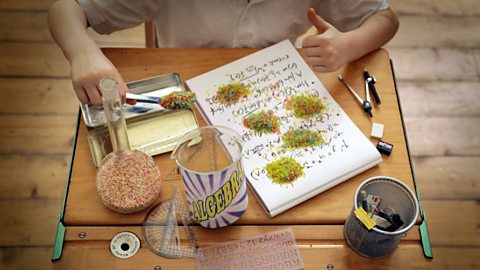Keiran McLean: WeÔÇÖre in the office of world famous architect Zara Jones whoÔÇÖs about to reveal her new design.
Zara Jones: Ladies and Gentlemen, I give you my ÔÇśHouse for a Geometry LoverÔÇÖ.
Keiran McLean: Brilliant! What a beautiful model. Now, what scale is it?
Zara Jones: Scale?
Keiran McLean: Yes, scale. You know, is the model 1:50? So, if itÔÇÖs 1 centimeter on a map or model, itÔÇÖll be 50 centimeters in real life?
Zara Jones: No.
Keiran McLean: What is the scale then?
Zara Jones: No. No. Stop. IÔÇÖm not interested in the maths. I donÔÇÖt bother with scale. ItÔÇÖs too hard. No.
Keiran McLean: So, itÔÇÖs 1:1. The Model is the same size as the actual building youÔÇÖre going to build.
Zara Jones: Yes. 1:1. Whatever you say. This IS the building. ItÔÇÖs finished.
Zara Jones: Infact. You can go inside if you like.
Keiran McLean: Really? But how will I fit through the door?
Zara Jones: Oh really. Must I do all the work round here?
Zara Jones: Let me just give you a guided tour.
Narrator: Scale and Coordinates. Sounds coordiplated. I mean, complicated. But, donÔÇÖt panic.
V.O: LetÔÇÖs kick some Maths!!
Narrator: Hear Scale think size. In real life, my house is 100 meters from this tree.The distance between them on this map is 10 cm.You already know that 1m is the same as 100cm, so 100m equals 100 X 100cms, and thatÔÇÖs 10000cm.
Narrator: So how much bigger is the real distance than our map? Well, 10000 ├Ě 10 = 1000, so the real distance is 1000 times bigger than the map. We say that the map has a ratio of 1:1000. Objects in real life are 1000 times bigger than they are on the map.
Narrator: Maps also have a grid of squares on them and numbers at the sides. This is so we can find a point on the map by using numbers that we call coordinates. We can use coordinates to help us make a shape bigger or smaller using a scale factor.
Narrator: The X axis is horizontal. It goes across. The Y axis is vertical. It goes up. The X axis and Y axis stretch into minus territory. And where they cross is called the origin.
Narrator: Now letÔÇÖs make a point A there. We mark down the coordinates by going ACROSS first, THEN UP.
Det. Lewis Stinker: Okay Sgt. LetÔÇÖs be Methodological! Go into the house! And up the stairs!
Sgt Janice Fungal: Just like when we mark down coordinates. Across and up! Okay!
Det. Lewis Stinker: You could have opened the door!
Narrator: So X first, 2, then followed by Y, 2. ItÔÇÖs really important to get that in the right order, X first, then Y, just like they are in the alphabet. So we write a 2,2. If I gave you b 6,4 and c 4,6, weÔÇÖd end up with a triangle.So, now we have coordinates for a shape. Just think of them as a recipe.
Baker: TRIANGLES!
Narrator: What if we want to make it larger or smaller? ThatÔÇÖs when we use a Scale Factor ÔÇô which is how much bigger or smaller you want something to be. And itÔÇÖs really very easy. If we had a Scale Factor of 2, then weÔÇÖd want our triangle twice as big, so we multiply our coordinates. Look. By multiplying each coordinate by 2, so that a (2, 2) becomes (4,4) we can find out the coordinates for our new twice as big triangle.
Narrator: But not all Scale Factors will make things bigger. A Scale Factor of ┬Ż will halve the size of our original, so again, multiply your original coordinates by a half and you get (1,1), (3,2), and (2,3).
Narrator: Sometimes, you wonÔÇÖt have a Scale Factor, and youÔÇÖll be asked to find one. But donÔÇÖt worry, youÔÇÖll be able to work it outÔÇŽ If we look at these two rectangles, we know that these corresponding sides are 3 and 9. The bigger shape is our copy and itÔÇÖs always copy over original, so 9 over 3 is, well, 3. Our Scale Factor is 3, which means our copy is three times as big as the original.
Narrator: Now, how to find out the missing length of the larger rectangle? Again, weÔÇÖre using what we know to find out what we donÔÇÖt know. We multiply the known length of 4 by our Scale Factor or 3 to get 12! The length of our missing side is 12 centimetres!
Narrator: So, now you know how to do all that, I expect youÔÇÖll all grow up to be World Famous Architects and Engineers. Which reminds me. I wonder how the world famous architect Zara Jones is getting on?
Lady: Can I have a proportion of Fish & Chips please.
Server: A portion of Fish & Chips coming right up.
Lady: No! I said a proportion of Fish & Chips please.
Server: A proportionÔÇŽ
Lady: Yes please. A large proportion. LetÔÇÖs scale it up to twice the size!
Server: Ok
Lady: ThatÔÇÖs not in proportion! Double the fish! Double the chips!
Lady: ThatÔÇÖs better. The large portion is now in proportion to the smaller one. Same proportions!
Lady: Thanks. Glad to see you know all about proportion now.
Server Salt & Vinegar?
Video summary
We see a demonstration of converting distance on a map to real-life distance and learn how to calculate scale factor given the actual distance on a map.
Reading coordinates and placing coordinates on a set of axes is explained, which leads on to enlargement using scale factors on a coordinate plane.
An example of calculating unknown sides of an enlarged shape is shown.
The end sketch illustrates the idea of proportion.
This clip is from the series Kick Sum Maths.
Teacher Notes
Pupils could use scale factors to enlarge shapes on a coordinate plane or to read maps.
They could create scale drawings and models of objects or places, for example a map of the school.
These clips could be used for teaching Maths at KS2 or at a beginner level in England, Wales and Northern Ireland and 1st and 2nd Level in Scotland.
As The Crow Flies. video
A demonstration of how to calculate the perimeter and area of simple and compound shapes with the help of the crow and Detective Stinker.
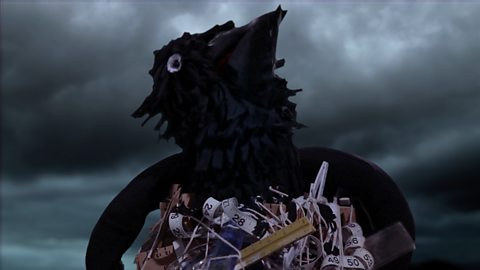
Decimal Dance Off 1. video
The structure of fractions, decimals and percentages are demonstrated through a 'Decimal Dance Off'.
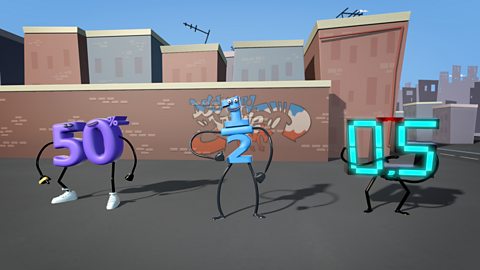
Decimal Dance Off 2 video
The connection between fractions, x decimals and percentages and how to convert between them are explored through a 'Decimal Dance Off'.
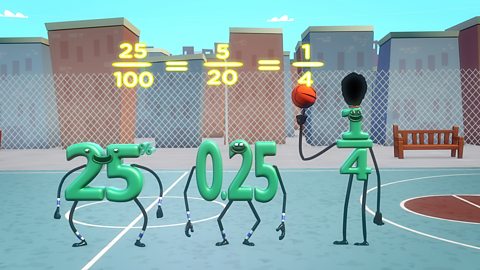
Geometry Rules OK. video
Introducing geometry, angles and shapes through a spoof house building show and an animation game show.
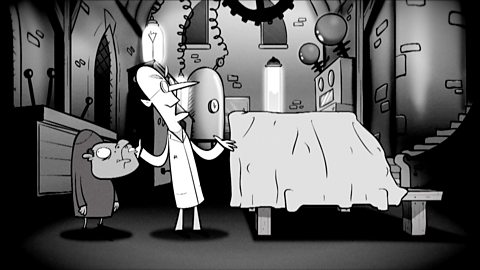
Let's Have Some Order. video
An explanation of why using the correct order in mathematical calculations is important.

Pie And Pie Again. video
An introduction to pie charts and how they show relative proportions.
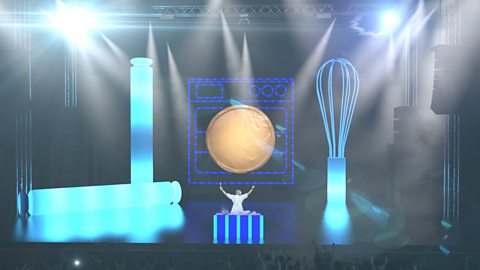
Prime Suspects 1. video
Introducing prime numbers, composite numbers and factors in a sketch show featuring puppet Detective L Stinker and his animated friends.
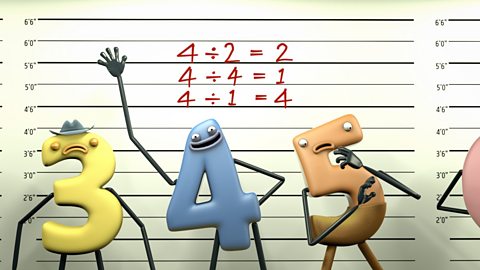
Prime Suspects 2. video
Decompose numbers into prime factors. End sketches look at primes and simple sequences.

Why Maths Why? video
This clip encourages students to overcome their fear of maths. Learning a few skills will give them the power to tackle the trickiest maths challenges.

X Marks The Thought. video
An introduction to using algebra to solve simple equations by using inverse operations.
